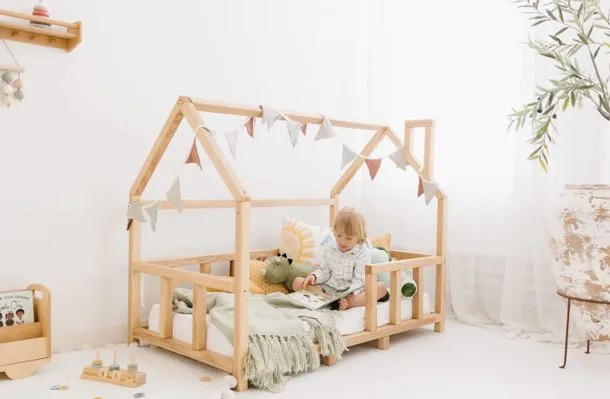Designing Independence: The Rise of Montessori Furniture in Modern Homes
In recent years, Montessori furniture has quietly taken root in the hearts of parents, educators, and interior designers alike. More than just a stylish trend, this form of child-centered design embodies a profound philosophy: that children thrive when they are empowered to explore, learn, and grow independently within a thoughtfully prepared environment.
What Is Montessori Furniture?
Montessori furniture is built on the principles established by Dr. Maria Montessori, an Italian physician and educator whose early 20th-century work revolutionized childhood education. Her approach emphasizes autonomy, hands-on learning, and respect for a child’s natural psychological development.
To support this, Montessori furniture is:
- Scaled to a child’s size – Chairs, tables, beds, and shelves are all designed to be safely accessible without adult assistance.
- Functional and minimalistic – Rather than flashy or complex, Montessori pieces are simple, purpose-driven, and often crafted from natural materials like wood.
- Flexible and open-ended – The furniture is designed to grow with the child, adapting to changing needs and encouraging creative use.
Encouraging Independence at Home
The cornerstone of Montessori design is fostering independence. In a traditional home setup, a toddler might rely on adults to retrieve toys or climb onto a chair. But in a Montessori-inspired space, low shelves, open storage, and child-height counters empower even the youngest family members to make choices and care for their environment.
A few common Montessori pieces include:
- Floor beds – Replacing cribs with low-to-the-ground beds allows children to get in and out freely, encouraging better sleep autonomy and physical confidence.
- Learning towers – These sturdy platforms let toddlers safely reach kitchen counters, transforming cooking time into an opportunity for collaboration and skill-building.
- Child-sized tables and chairs – Perfect for eating, drawing, or working, these help establish routines and promote responsibility through comfort and accessibility.
Aesthetic Meets Function
Montessori furniture is not only practical — it’s also aesthetically pleasing. Its emphasis on clean lines, quality materials, and neutral tones complements modern minimalist interiors. Many parents are drawn to its serene, clutter-free look, which stands in contrast to the often chaotic feel of conventional playrooms filled with bright plastic.
Eco-conscious consumers also appreciate the sustainable aspect of Montessori-style furnishings. Brands focused on this niche tend to prioritize ethical production, durability, and natural finishes — creating items that are both safe for children and kind to the planet.
Not Just for the Nursery
While Montessori furniture is often associated with toddlers and preschoolers, its principles can extend to older children as well. Adjustable desks, floor cushions for reading nooks, and open wardrobes for clothing independence are just a few examples of how the philosophy scales as children grow.
Even in adult living spaces, the Montessori mindset can inspire a shift toward more intentional, respectful, and human-centered design — proving that what benefits children can subtly enhance life for the whole family.
Final Thoughts
In a world of overstimulation and over-scheduling, Montessori furniture offers a calm counterpoint. It invites children to slow down, make choices, and engage deeply with their surroundings. And for parents, it provides an elegant, meaningful way to support their child’s development — one thoughtfully designed piece at a time.
Whether you’re a devoted Montessori practitioner or simply someone seeking more harmony at home, this approach to furniture design serves as a powerful reminder: when we shape the environment around a child, we help shape the child within.




